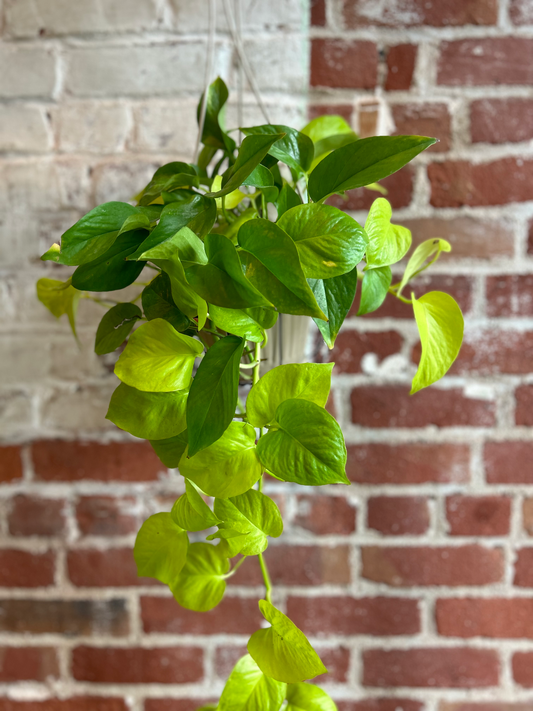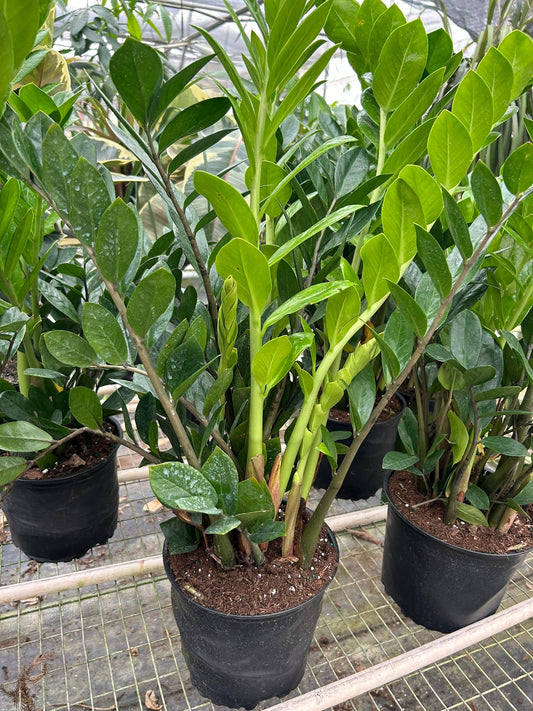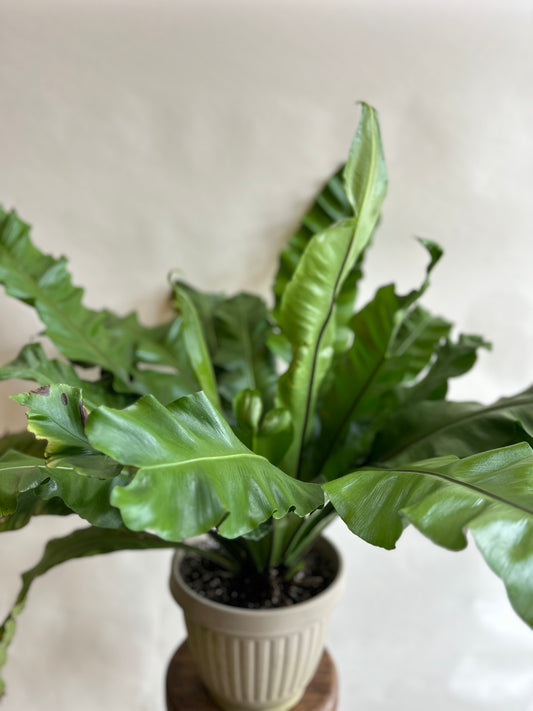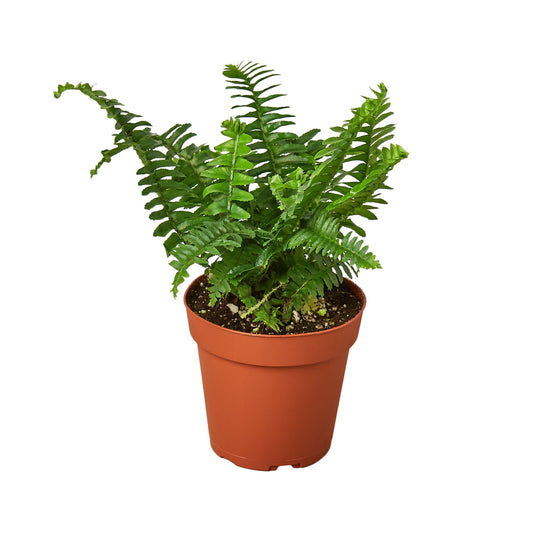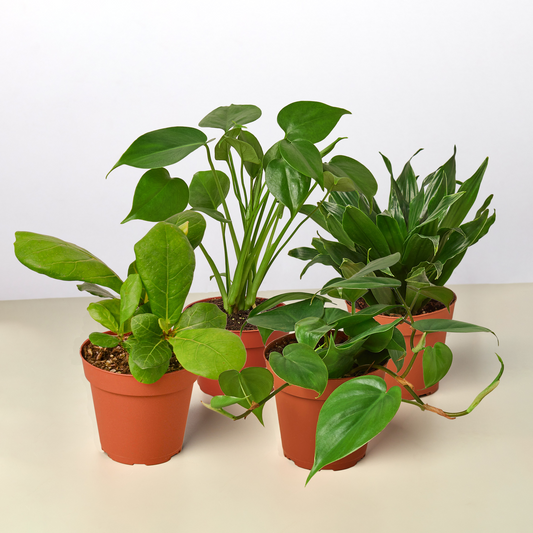How to Grow and Care for Alocasia Pollys
Cafe Planta Team
Alocasia Polly, with its striking arrow-shaped leaves and bold veining, is the kind of plant that turns heads. For anyone looking to add a touch of drama to their indoor garden, this plant is a perfect choice. But, like any diva, it comes with its quirks and demands.
In this article, we'll chat about everything you need to know to grow and care for your Alocasia Polly successfully. From light and water needs to dealing with pests and choosing the right pot, I've got you covered. Let's get started!
Understanding Alocasia Polly
Before diving into the nitty-gritty of care, it's helpful to know a bit about the plant you're nurturing. Alocasia Polly, sometimes known as African Mask Plant, is a member of the Araceae family. Its unique foliage features deep green leaves with prominent white veins, creating an eye-catching contrast. These plants are native to tropical and subtropical regions of Asia and Eastern Australia, which explains their love for warmth and humidity.
Interestingly enough, the 'Polly' variety is a hybrid, known for its more compact size compared to other Alocasias. This makes it perfect for indoor spaces, even if you're a bit short on room. However, being a tropical plant, it has specific needs that must be met to thrive. Let's explore how you can make your Alocasia Polly feel right at home.
Light Requirements
One of the first things to consider is light. Alocasia Polly thrives in bright, indirect light. Think of the kind of light you get from a north- or east-facing window. Too much direct sunlight can scorch its delicate leaves, leaving them looking a bit worse for wear.
- Bright, Indirect Light: Place your plant near a window where it can receive filtered sunlight. A sheer curtain can help diffuse direct rays.
- Avoid Direct Sunlight: While Alocasia Polly loves light, direct sun can cause leaf burn. If you only have south- or west-facing windows, consider placing the plant further back in the room or using a curtain to reduce intensity.
- Adjust with the Seasons: During the shorter, darker days of winter, you might need to move your plant to a brighter spot or use a grow light to supplement natural light.
Remember, if your Alocasia Polly starts looking a bit leggy or the leaves lose their vibrant color, it might be a sign that it needs more light. On the flip side, if you notice brown edges, it could be getting too much direct sun.
Watering Tips
Watering can be a bit of a balancing act with Alocasia Polly. Too much or too little can lead to problems, so it's crucial to find the sweet spot.
- Consistent Moisture: Alocasia Polly likes its soil to be consistently moist but not soggy. Water when the top inch of soil feels dry to the touch. This usually means watering once a week, but it can vary depending on your home's humidity and temperature.
- Drainage is Key: Make sure your pot has drainage holes to prevent water from pooling at the bottom. Root rot is a common issue with overwatering, so good drainage is essential.
- Adjust for Humidity: If you live in a dry climate, your plant may need more frequent watering. Conversely, in a humid environment, you might water less often.
If you notice your Alocasia Polly's leaves drooping or turning yellow, it's usually a sign of overwatering. Let the soil dry out a bit before your next watering session. On the other hand, if the leaves start to curl or brown at the edges, it might be thirsty.
Humidity Needs
Being a tropical plant, Alocasia Polly adores humidity. If you want to see it thrive, you'll want to mimic its natural environment as much as possible.
- Increase Humidity: Aim for humidity levels of at least 60%. You can achieve this by using a humidifier, placing a pebble tray with water beneath the plant, or grouping it with other plants to create a microclimate.
- Mist Regularly: Light misting can help increase humidity around your plant. Just be sure not to soak the leaves, as sitting water can lead to fungal issues.
- Bathroom Bliss: If you have a well-lit bathroom, it can be an ideal spot for your Alocasia Polly, thanks to the naturally higher humidity levels.
If your home is particularly dry, especially during winter months when heating systems are running, keeping your Alocasia Polly happy might require some extra effort. Regularly check for signs of stress, like browning leaf edges, and adjust your humidity-boosting tactics accordingly.
Soil and Potting
Choosing the right soil and pot is just as important as providing the right light and water. Alocasia Polly prefers a well-draining, aerated soil mix.
- Soil Mix: A mix of peat, perlite, and soil works well. You can use a standard houseplant potting mix and add some perlite or orchid bark to improve drainage.
- Pot Selection: Choose a pot with drainage holes. Terracotta pots are a great option because they allow moisture to evaporate, helping prevent overwatering.
- Repotting: Alocasia Polly doesn't need frequent repotting. Once every 1-2 years should suffice, or when you notice roots growing out of the drainage holes.
Remember, these plants like to be snug in their pots, so don't rush to upsize. When repotting, choose a pot that's only one size larger to avoid overwhelming the roots with too much soil.
Fertilization Routine
To keep your Alocasia Polly looking its best, it's important to feed it. These plants benefit from regular fertilization during the growing season.
- Growing Season Feeding: Fertilize every 4-6 weeks during spring and summer. Use a balanced, water-soluble fertilizer diluted to half strength.
- Ease Up in Winter: During the cooler months, reduce feeding to once every couple of months, or stop altogether, as the plant's growth slows down.
- Signs of Over-fertilization: If you notice brown tips on leaves or a white crust on the soil, it might be a sign of too much fertilizer. Flush the soil with water and reduce feeding frequency.
Fertilization helps maintain vibrant foliage and supports healthy growth, but overdoing it can cause more harm than good. Always start with less and adjust based on your plant's response.
Pest Management
Unfortunately, Alocasia Polly can be prone to pests. The most common culprits are spider mites and aphids, but with a little vigilance, you can keep these at bay.
- Regular Checks: Inspect your plant regularly for signs of pests. Look under the leaves, as that's where they often hide.
- Natural Remedies: If you spot pests, a gentle spray of water can dislodge them. For more persistent infestations, try neem oil or insecticidal soap.
- Maintain Humidity: High humidity can deter some pests, so keeping your plant's environment humid can serve as a preventative measure.
If you catch a pest problem early, it's usually easy to manage. Regularly cleaning the leaves with a damp cloth can help, too, keeping them dust-free and discouraging unwelcome visitors.
Dealing with Common Issues
Every plant parent faces challenges, and Alocasia Polly is no exception. Here are some common issues you might encounter and how to tackle them:
- Yellow Leaves: Often a sign of overwatering. Check your watering schedule and soil moisture levels.
- Brown Edges: This could indicate low humidity or inconsistent watering. Increase humidity and ensure a regular watering schedule.
- Droopy Leaves: This can be a sign of either over or under-watering. Feel the soil and adjust your watering routine accordingly.
Remember, a little trial and error is part of the process. Plants, like people, have their moods and moments, so don't get discouraged if things aren't perfect right away.
Creating a Beautiful Plant Space
Alocasia Polly isn't just a plant—it's a statement piece. With its dramatic foliage, it can add a touch of the exotic to any room. Here are some tips for styling your space with this gorgeous plant:
- Pair with Neutral Decor: The deep green leaves of Alocasia Polly look stunning against neutral backgrounds, allowing its unique features to truly pop.
- Use as a Focal Point: Place your plant in a prominent spot, like a corner of the living room or a bright bathroom, where it can be admired.
- Complement with Texture: Pair with other plants that have different textures or colors to create an eye-catching display.
Creating a harmonious plant space not only enhances your home's aesthetic but also brings a sense of tranquility and connection to nature. It's all about finding what works for you and your style.
Final Thoughts
Caring for Alocasia Polly can be a rewarding experience, offering both beauty and a touch of the exotic to your home. By understanding its needs—light, water, humidity, and a bit of love—you can keep your plant thriving.
At Cafe Planta, we're passionate about helping you succeed in your plant journey. Whether you're looking for a new plant friend or need advice, we're here to help. Feel free to reach out via email or connect with us on Instagram. Let's grow beautiful spaces together!


